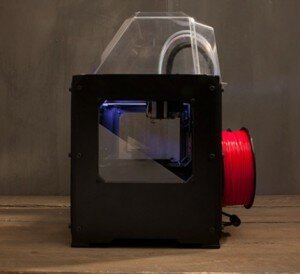 We’ve talked about some of the cool products being printed by 3D printers on the blog before, but it’s pretty hard to beat those 3D printed items that can save a life, restore mobility, or ease the pain of those in suffering. It goes without saying that one of the unexpected, yet wonderful things about 3D printers is their use in the medical field.
We’ve talked about some of the cool products being printed by 3D printers on the blog before, but it’s pretty hard to beat those 3D printed items that can save a life, restore mobility, or ease the pain of those in suffering. It goes without saying that one of the unexpected, yet wonderful things about 3D printers is their use in the medical field.
Professionals are discovering fairly quickly the ways that 3D printing’s light, durable products can be a great substitute for body parts (even limbs!) and create these types of parts substantially quicker than ways that were used to reproduce ligaments and such in the past.
Take, for example, this from NPR. Garrett Peterson was born in 2012 with a defective windpipe that would periodically collapse and stop his breath. After he was born, Garrett spent a year in intensive care, and eventually, the doctors admitted that there wasn’t much left that they could do for the baby. “Then, the Petersons heard about some doctors at the University of Michigan, who were using 3D printers to custom-make tiny devices they call “splints” to prop open defective windpipes for babies like Garrett,” explained Rob Stein of NPR. The Petersons rushed to Ann Arbor, and Garrett received the splint. Two weeks later, he was finally able to leave the hospital for the first time in his entire life.
It hasn’t been an entirely pain-free journey, but doctor Glenn Green is confident about the future of Garrett’s windpipe: “We know the splint has been opening up the way that we wanted,” Green says. “And so the airway is able to grow. So, at this point, we’re just waiting for further growth to happen and for the splint to eventually dissolve.” For the Petersons, they’re just happy that their little boy is able to be home for Christmas breathing comfortably. For them, 3D printing is an absolute miracle.
These are the types of stories that remind us that 3D printing is for more than just creating affordable makeup or fun trinkets to keep on your mantel, but is truly changing the face of how people live, breathe, and exist. Plenty of these types of developments are also due to the at the University of Nebraska-Lincoln, a lab that specializes in medical therapeutics, devices, and surgical tools, and one of the images on their homepage even shows a student removing a custom part from their 3D printer.
There has never been a more exciting time for those who are interested in innovations in the medical field, or even inventors, to explore the capacity of what can be done with 3D printing to truly revolutionize the medical product industry. If we can print baby Garrett a new windpipe, what else can we do that we couldn’t before? The limits of the powers of 3D printing have not yet been reached, but it will be an exciting journey for manufacturers and makers alike.
Questions? Comments? Want to learn more? Leave a comment in the section below, anytime!
—
photo credit: via
 Official Nebraska Government Website
Official Nebraska Government Website
